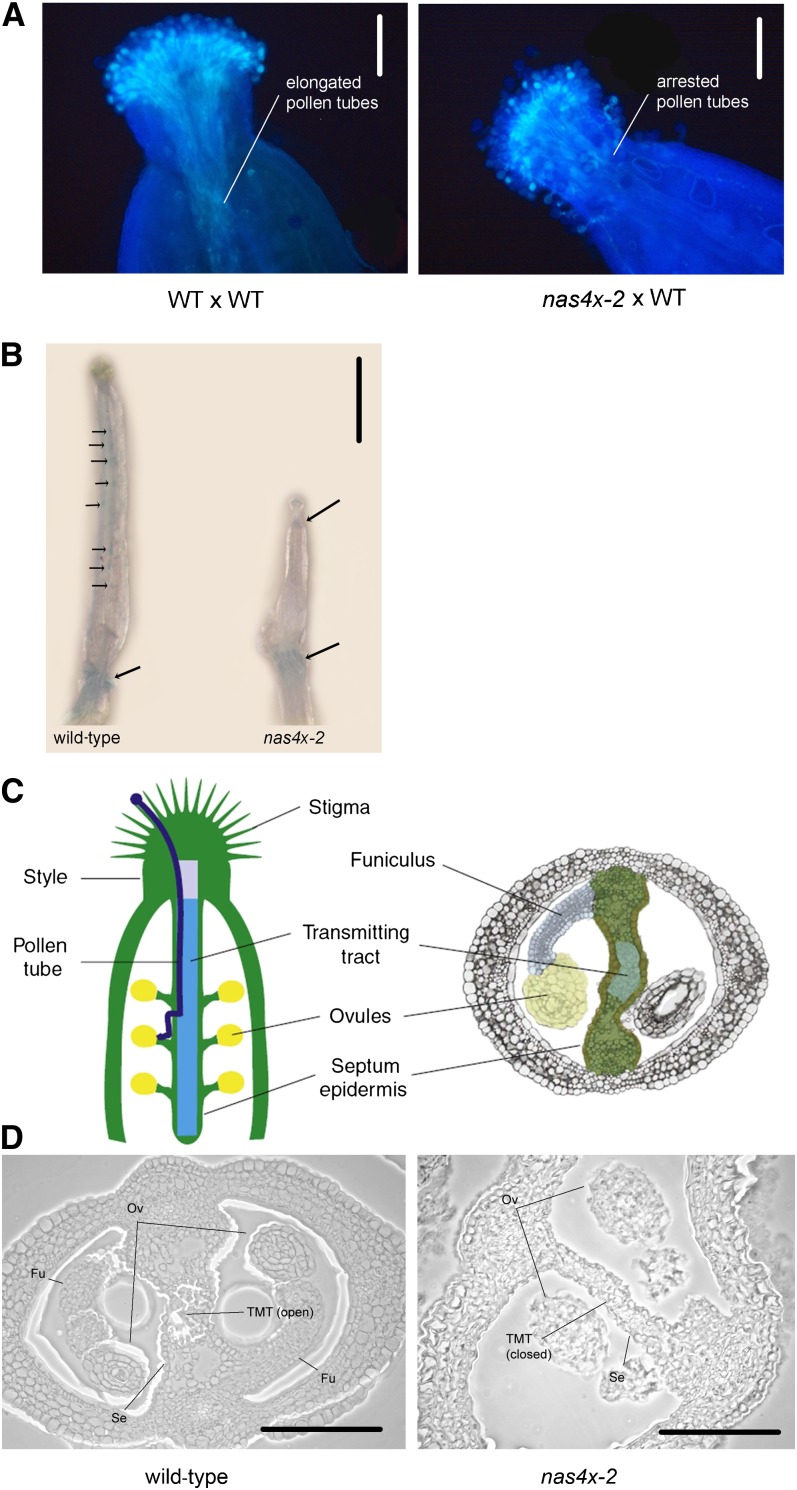Figure 9.
Pollen Tube Growth Was Arrested in nas4x-2 Carpels.
(A) In vivo pollen germination, showing that wild-type (WT) pollen produced elongated tubes that were arrested below the style in nas4x-2 carpels (nas4x-2 × wild type), in contrast with the controls (wild type × wild type). Pollen germination was visualized by aniline blue staining. Bars = 500 µm.
(B) Perls Fe staining, showing that Fe accumulated at the sites of the ovules and at the bottom of the ovary in the wild type, while Fe accumulation was visible at the bottom of the style and at the bottom of the ovary in nas4x-2 (Fe staining indicated by arrows). Bar = 1 mm.
(C) Illustration of longitudinal (left) and transverse (right) A. thaliana carpel sections. Note the position of the transmitting tract, which opens due to induced cell death in mature carpels. (Figure reproduced from Crawford and Yanofsky [2008].)
(D) Transverse sections of wild-type and nas4x-2 ovaries showing that the transmitting tract of the ovary was closed in nas4x-2, while it was open in the wild type. Fu, funiculus; Ov, ovule; Se, septum epidermis; TMT, transmitting tract. Bars = 125 µm.

